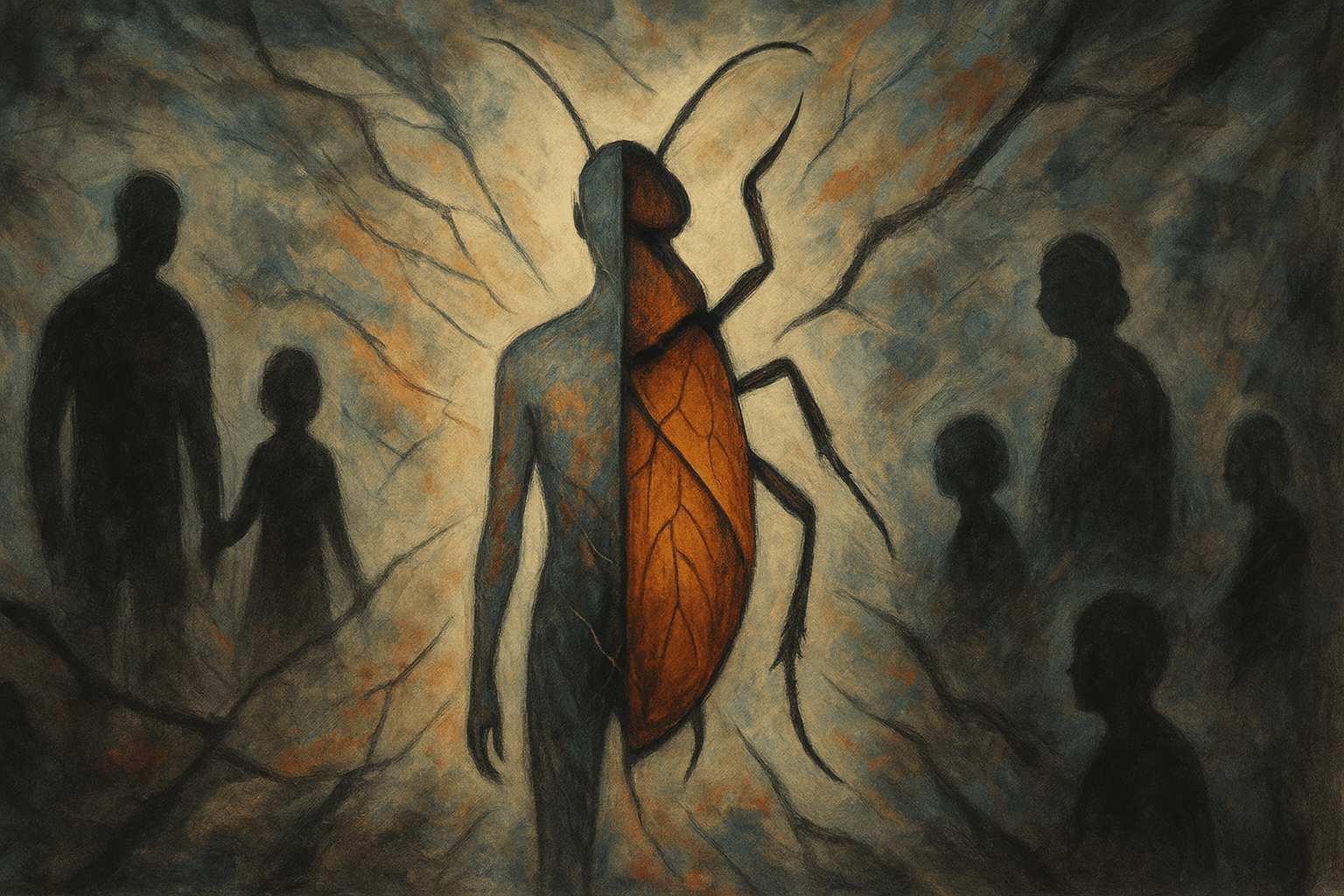Shifting Shapes: Exploring Identity and Transformation in Metamorphosis

When we think of transformation, we often picture a physical change, like a caterpillar becoming a butterfly. But what happens when that transformation is something grotesque, like becoming a vermin? In Franz Kafka’s Metamorphosis , we are thrust into the chaotic world of Gregor Samsa, who wakes up one morning to find himself inexplicably transformed into an insect. From this bizarre premise, Kafka dives deep into the themes of identity and transformation, challenging us to consider not just how changes affect us physically, but how they reshape our very being and our relationships with others.
At the outset, Gregor’s metamorphosis serves as a catalyst for an identity crisis. Once a dutiful traveling salesman burdened by familial responsibilities, he is now an unrecognizable creature, prompting a profound reevaluation of who he is. His initial attempts to communicate with his family are met with horror and confusion, highlighting a stark shift in their relationships. The family's reaction underscores a central theme: as Gregor's identity crumbles, so too does the foundation of familial love and support. Instead of compassion, we see fear and hostility, raising questions about the fragility of identity when faced with overwhelming change.
In the second chapter, the emotional weight of transformation deepens. Gregor's physical discomfort becomes a source of shame, especially as he observes the growing distance between himself and his family. His sister Grete, who initially nurtures him, soon finds herself increasingly burdened by the dual pressures of her brother’s condition and the family's financial struggles. This chapter beautifully illustrates the complexities of familial obligation and the emotional turmoil that arises when identity is stripped away. As Gregor becomes more alien, the family’s reactions range from pity to resentment, revealing how his transformation affects not just him, but the entire family unit.
By the third chapter, the ramifications of Gregor's transformation reach a tragic climax. His physical decline and the family's shifting attitudes culminate in a painful realization: Gregor, once a beloved member of the family, has become a source of shame and conflict. The apple lodged in his body serves as a brutal symbol of the emotional and physical burdens that now define his existence. As the family grapples with their financial woes and the arrival of tenants, Gregor’s presence becomes a suffocating reminder of their struggles. In a heartbreaking moment, when he attempts to connect with Grete during her violin performance, we witness the stark contrast between their former bond and the alienation that has taken its place.
Ultimately, Gregor’s death is not met with grief but rather a sigh of relief from his family. This final act of transformation, while tragic, highlights the painful evolution of identity not only for Gregor but for each family member. They have transformed from a unit bound by love and duty to one defined by resentment and relief. Kafka masterfully encapsulates how the metamorphosis of one can ripple through and irrevocably change the identities of many.
In conclusion, Metamorphosis challenges us to reflect on the nature of identity and the impact of transformation—both personal and relational. It’s a stark reminder that change can often lead to alienation, and the way we respond to those changes can reveal more about our own identities than we might wish to admit. So, what does it mean to truly transform? Perhaps it’s not just about the changes we undergo, but also about how those changes reshape the world around us. In Gregor’s tragic tale, we are left to ponder the cost of transformation and the identities we may lose along the way.
Books: Metamorphosis
Authors: Franz Kafka
Publishers: Public Domain